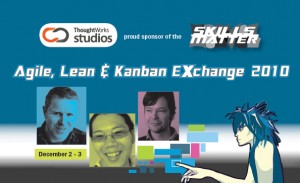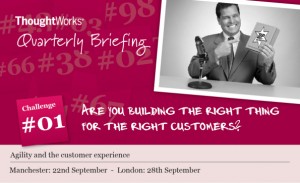Letting go is the hardest thing
Tim Brown from IDEO gave the audience at his TED Talk a simple exercise. He asked the audience to draw a picture of the person sat next to them. He gave them a minute to do so. He then asked them to show their pictures. “Sorry” was the stock reaction as the sketches were revealed. They had an inhibition on showing their work. When it comes to creativity, as we move beyond childhood we take on board inhibitions and feel more uncomfortable sharing our creative efforts unless we perceive them to be ready or any good. Getting a visual designer to share her work in progress is a challenge. We fear what others will think if our “deliverable” is not ready, is not finished or polished. We fear setting expectations, we fear disappointing, we kill our creativity with fear.
So we are uncomfortable at letting others into our personal creative process. Now take this to the organisation, to the enterprise and creative genocide is abound. Like the Head of Digital who had 130 different stakeholders to socialise the Organisation’s new website designs with. Enter the HiPPO. The Highest Paid Person’s Point Of view. And with a few of those on board you get design by committee and design mediocrity. Or the client who refuses to engage with customers or end users in the early stages of the design process in fear of what they might think. A fear of setting expectations, a fear that their competitors might see what they are up to. Killing their creativity with fear.
Letting go is the hardest thing. But it can also pay great rewards.
On 27th October people coming out of arrivals at Heathrow airport were greeted by singers and dancers and general merriment. As an ad campaign for T-Mobile by Saatchi & Saatchi it was inspired, creative but not without risk. All the members of the public filmed had to sign a release form, agreeing to their being used in the ad. What if they didn’t? But they did. Whilst meticulously planned, the success of the ad is in the general public. T-Mobile got over any fear they may have had of the unknown and let go of the product to let the crowd create. It’s an uplifting piece, and successful too; their youTube page has had over 5.5 million views. And to the bottom line? The ad saw a 12% rise in sales the week after airing.


